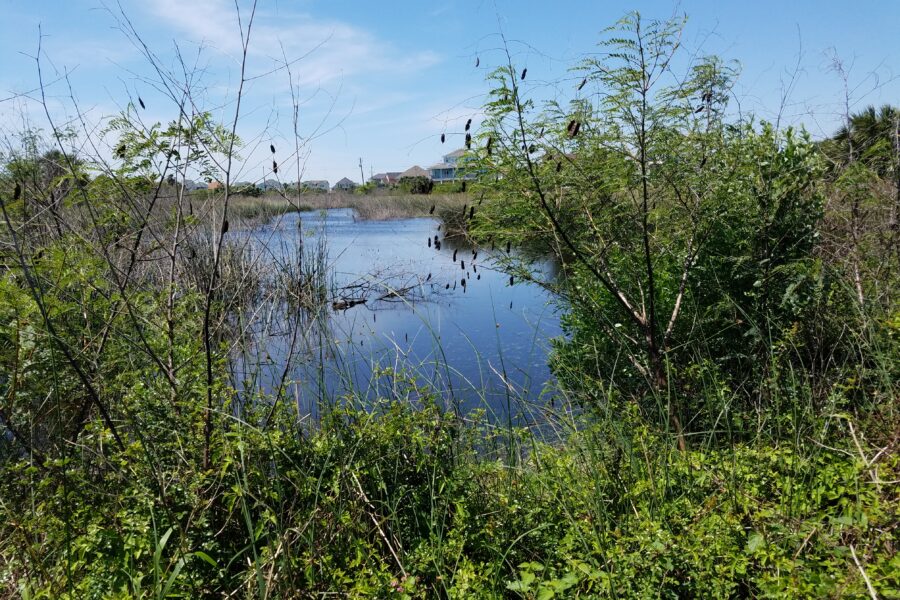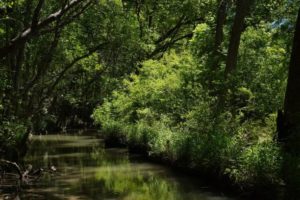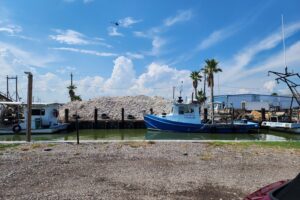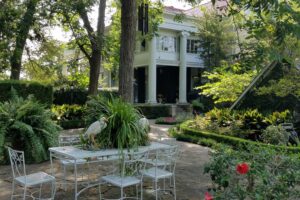I look at my bare, vulnerable toes peeking out from beneath the leather straps of my sandals. I don’t have to be told twice.

Across the pond, on the beautifully pristine cement path, Michael says, “There is some serious filming going on over there.”
I see camera’s with telescopic lenses an arms length long, and tripods, and fingers pointing. Perhaps they are professionals? It doesn’t take me long to realize that giant cameras are to a nature preserve what salt is to pepper.
We wander on, Michael with his anemic looking Olympus, and me with my totally useless camera-phone. I learn to be attune to movement. I lose Michael, as I stop, look up, and see constant motion sparked with flashes of bright orange and black. I’m mesmerized by the constant flitting from branch to branch and the color of this tiny jewel like creature, feeling like he is here just for me.


Moving on, I find Michael and describe what I have seen. “That’s a Baltimore Oriole,” he tells me.
“There’s a bird called a Baltimore Oriole?” I thought it was a baseball team—only that. I have led a very sheltered life.

Walking through the midst of a tunnel of trees I can’t help but think that this is the quietest place on earth. Not loaded with people, but populated with enough visitors to be noticeable. The silence is reverential. No one talks. Everyone looks up. They all stand still as statues. It is nature’s cathedral—a shady shelter for some of her most beautiful creatures.

We bump into an avid birder. In short, whispered sentences he begins to describe all that he has seen giving each feathered creature a name and location. Shakespeare’s line, “A rose by any other name would smell as sweet,” comes to mind. I think that perhaps I am not a true birder—that’s for sure—but a lover of nature. Just being here is enough. I should probably keep this to myself.
I see whispers of movement and flashes of color. I’m intruding on a world that isn’t mine, and the occupants apparently don’t care if I see them or not. Except for one. I can hardly believe it. A tiny creature flies from his lofty perch, landing on the path in front of us. He—maybe a she—looks around and then daintily hops away. Magic.
Michael’s camera clicks.


We wander on, backtracking, discovering that the Baltimore Oriole is still busy flitting in his tree. Michael captures him on film.
It has been a lovely two hours.

Lafitte’s Cove Nature Preserve
3503 Eckert Drive, Galveston, TX 77554
This wooded preserve tucked into the middle of an island housing development is the island’s best temporary refuge for migrant songbirds who head north in spring and south in fall. There are three water drips where one can watch brightly colored birds bathing, splashing, drinking. The shallow fresh water ponds are also host to a variety of waterfowl.
For more information and a detailed description of top birding sites in Galveston, the Great Birding In and Around Galveston Island brochure can be accessed from the following link, Galveston’s Lafitte Cove Nature Preserve.









3 Comments
Leave your reply.